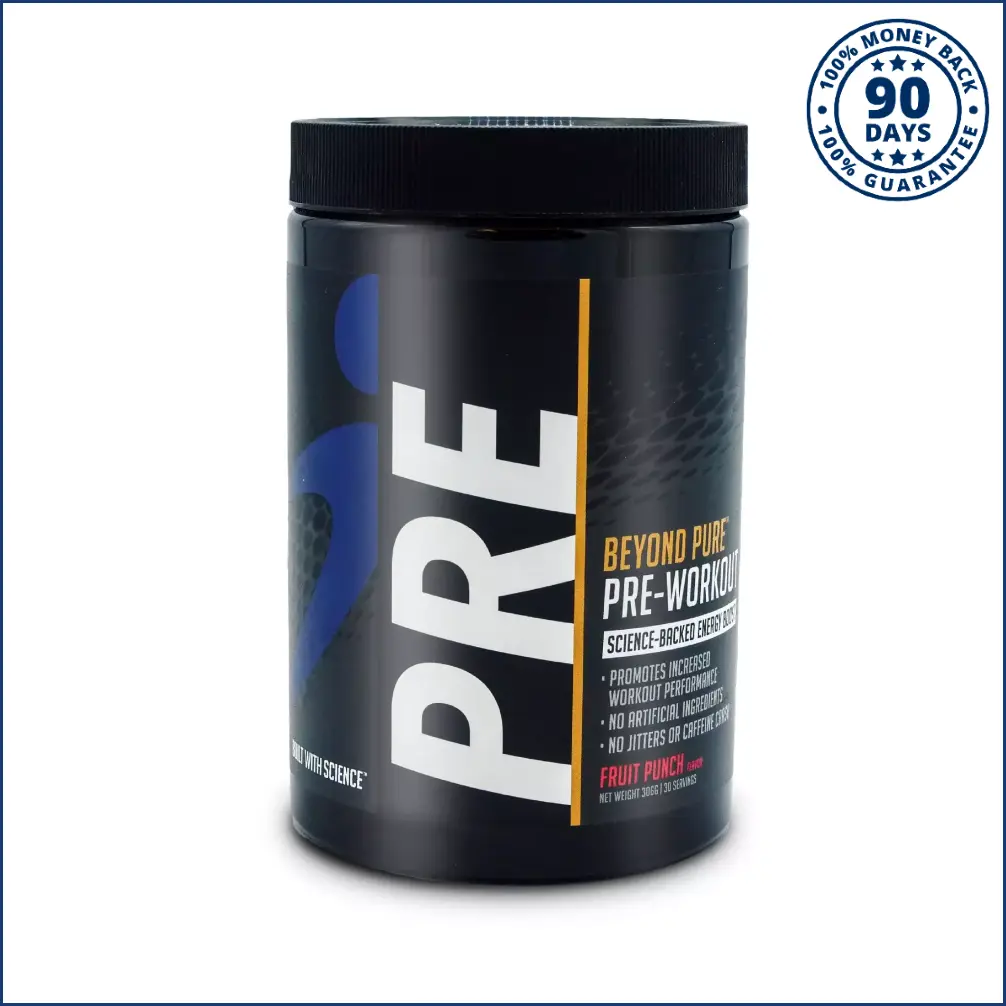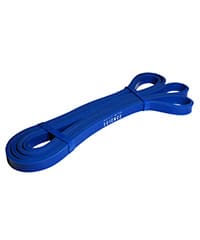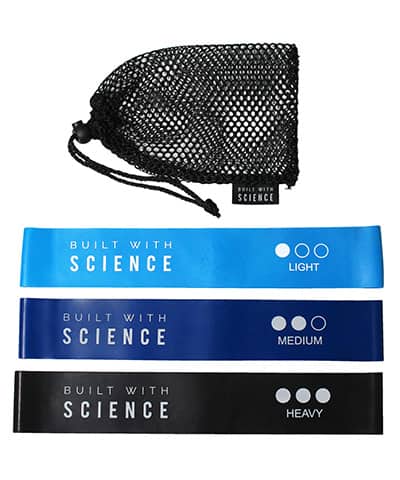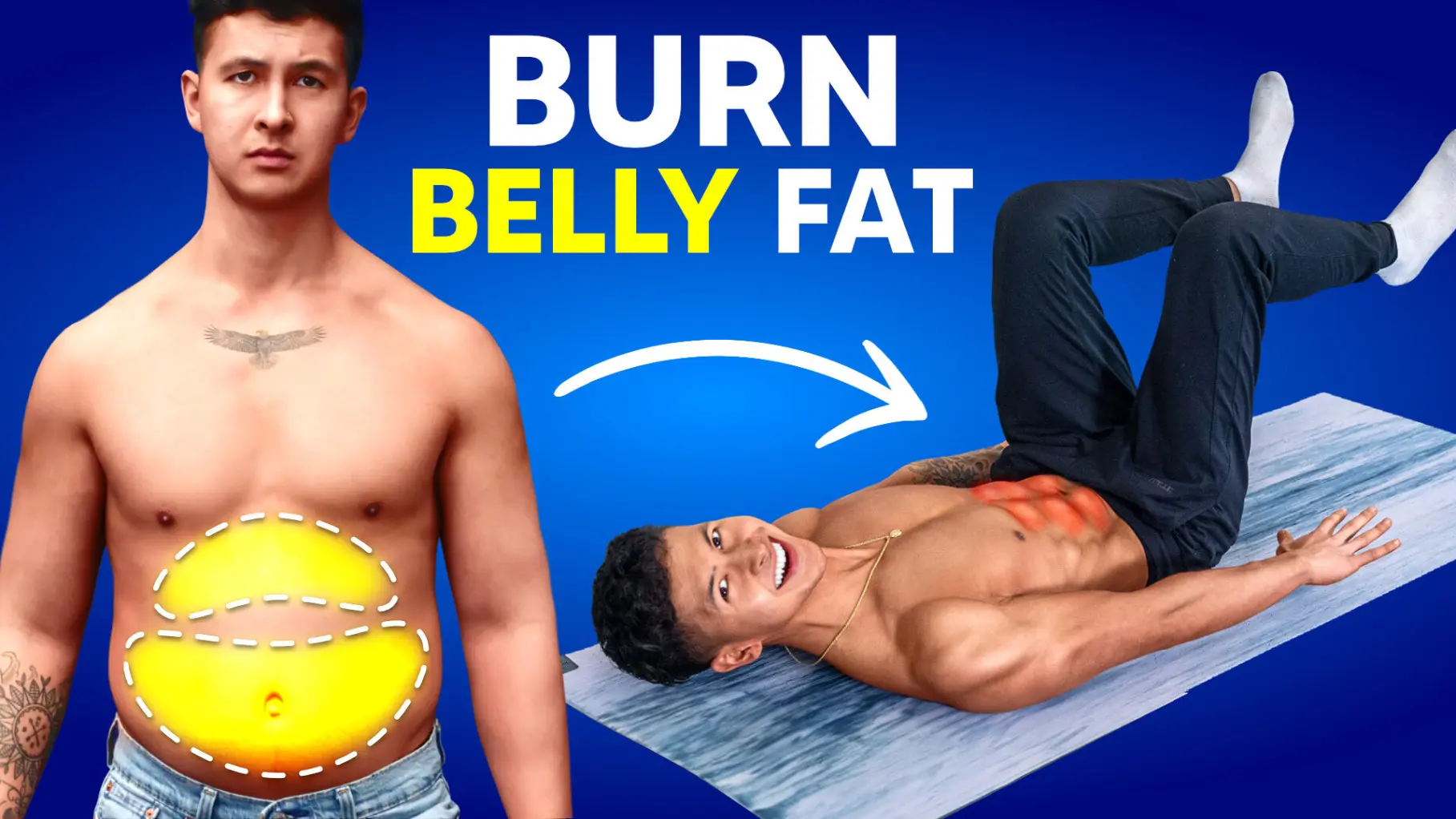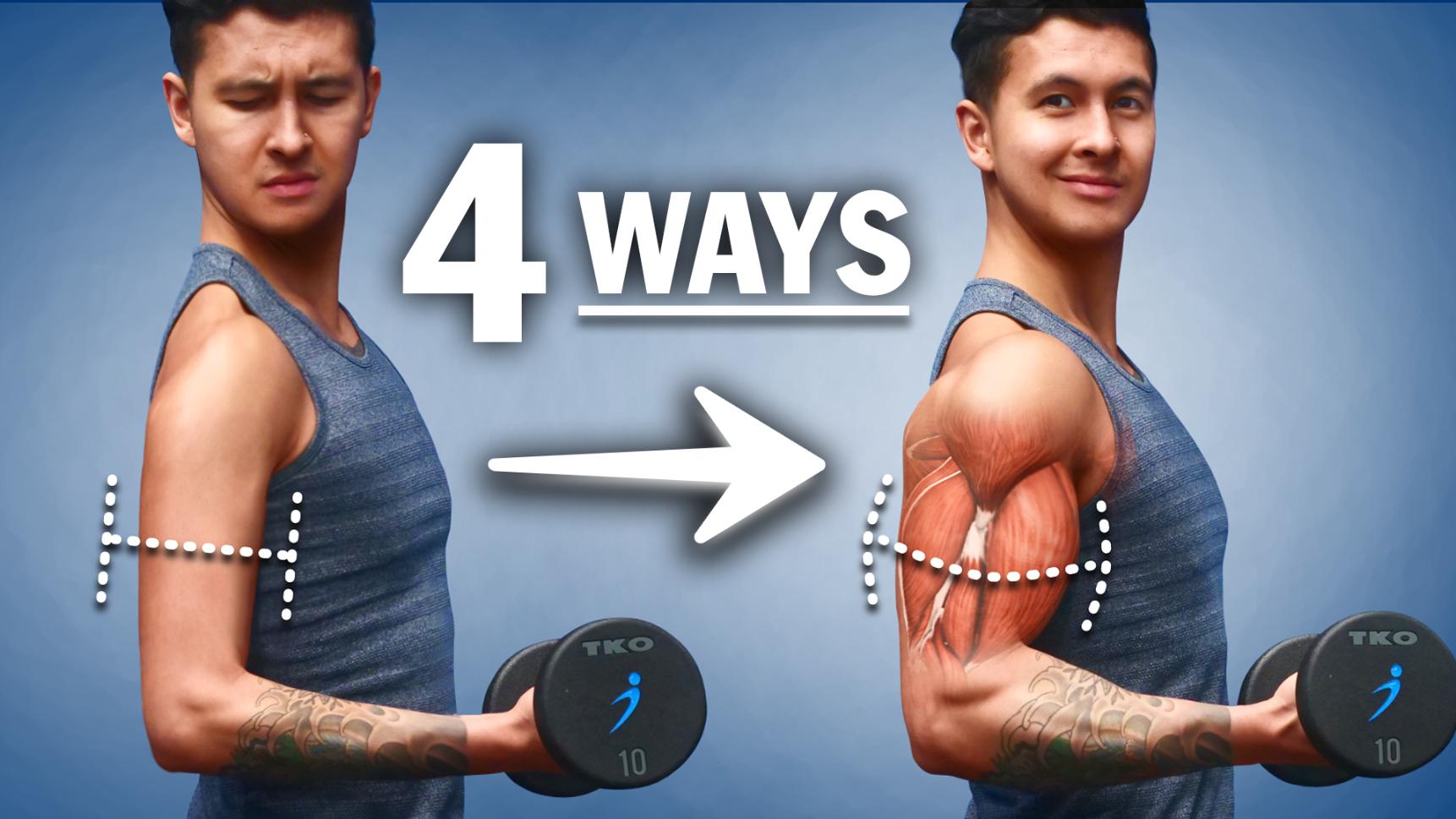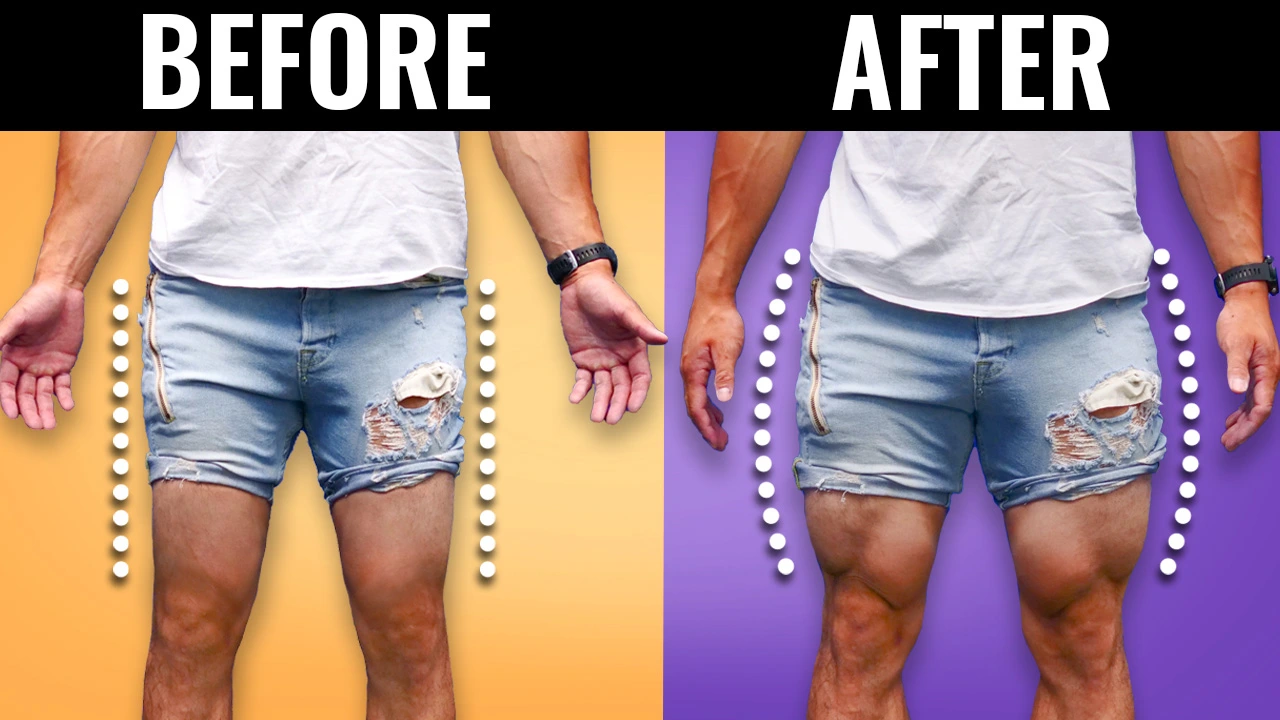
EXPLOSIVE QUADS GROWTH: 5 Mistakes Keeping Your Legs Skinny
You can't build an impressive-looking set of legs without building your quads. Here, I show you the 5 key mistakes (probably) contributing to your chicken legs — and how you can fix every one of them.
If you’re like me and appreciate a well-rounded physique, then you care about your leg development and understand its importance in balancing out the upper body. But developing an impressive set of legs isn’t just about working hard. There are 5 mistakes people make with their quads training that severely limit their leg growth.
I’ll explain what those are, go through how to fix them, and then show you how to implement this into your routine so you can start seeing quads (and thus) leg growth fast.
Before that: if you're looking for a training program that'll help you set up every single one of your workouts for optimal muscle growth, I've got just the thing for you. Every BWS program is designed to be an all-in-one, science-based process that’ll get you to your dream physique FAST. And best of all? It's all rooted in science. For more information:
Click the button below to take my analysis quiz to discover the best program for you:
↓
An Introduction To Quads Anatomy
Before we dive into the mistakes, let’s take a quick look at the muscles we’ll be focusing on: the quadriceps.
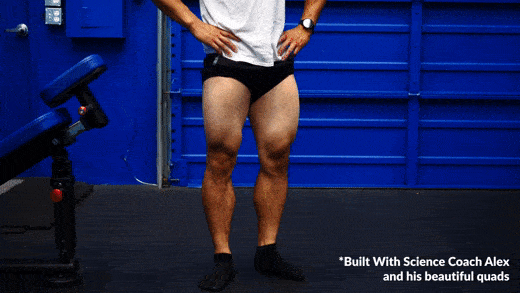
The quadriceps, or quads for short, are a group of 4 muscles located in the front of your legs. They’re the most voluminous muscle in the body and when well developed, are the key to creating the impressive set of legs you’re after.

But the fact that there are 4 different quad muscles means that you need to choose your exercises carefully. And while some people can simply squat and see great quad development, others aren’t so lucky.
Why's that so? Let’s dive into the first training mistake, and you'll understand why soon enough.
Mistake 1: Relying Too Much On Squats
Barbell squats are often recommended as the best exercise to grow bigger quads.
One issue with barbell squats however is they demand a lot from your core and lower back muscles to help stabilize the weight.
By the way: another common issue is also poor form. So, definitely check out this article on 4 major squat form fixes before moving on.
In fact, if we take a look at research analyzing muscle activation of the back squat, the lower back muscles are highly activated. Almost as much as some of the quad muscles are.
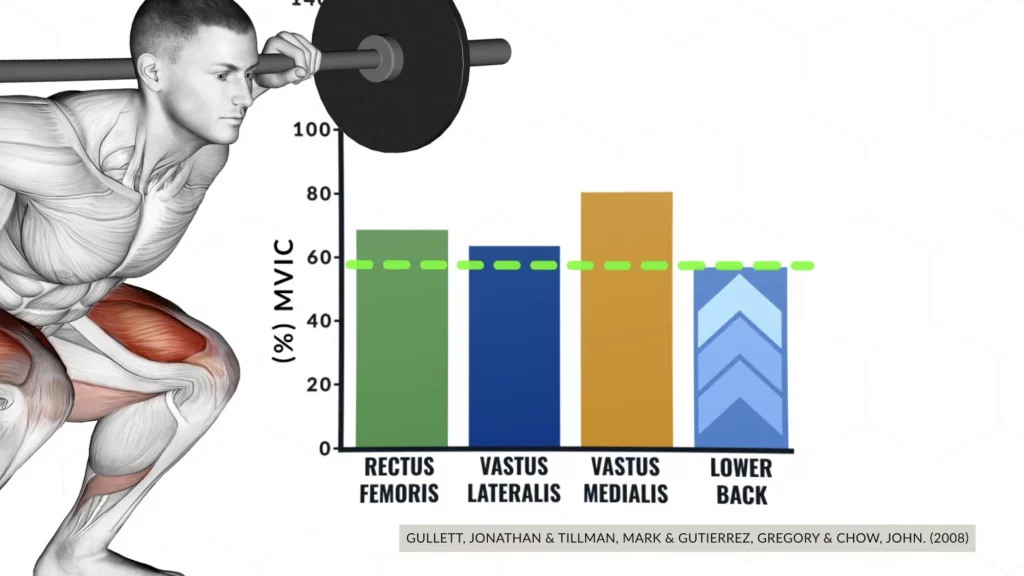
Now, this isn’t a bad thing. But if your main goal is to grow your quads and legs? Then it can be an issue.
Because what some of you may experience when squatting is that your lower back muscles will end up fatiguing first before your quads have reached anywhere near their limit (even if you are squatting "properly"). This is exactly what I’d personally experience whenever I’d squat.
Exercises That'll Increase Quads Involvement By Minimizing The Need For Support
And this is where machines can come in handy.
Exercises like the hack squat, with the use of the back support, help minimize the stability demands of the exercise. As a result, you’ll be able to push your quads close to their limits without worrying about other muscles fatiguing first.
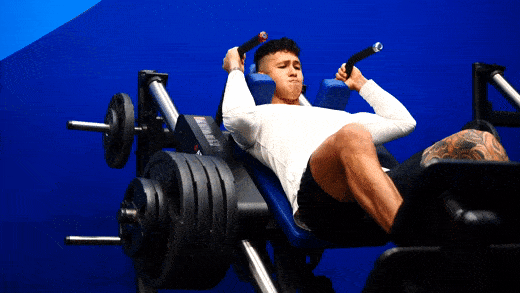
Unfortunately, most gyms don’t have a good hack squat machine.
In this case, another option is to use a smith machine squat. Yes, you heard me right. As shown in a 2014 EMG analysis, the added stability significantly reduces the demands placed on the lower back muscles and as a result can help you push your quads closer to their limits.
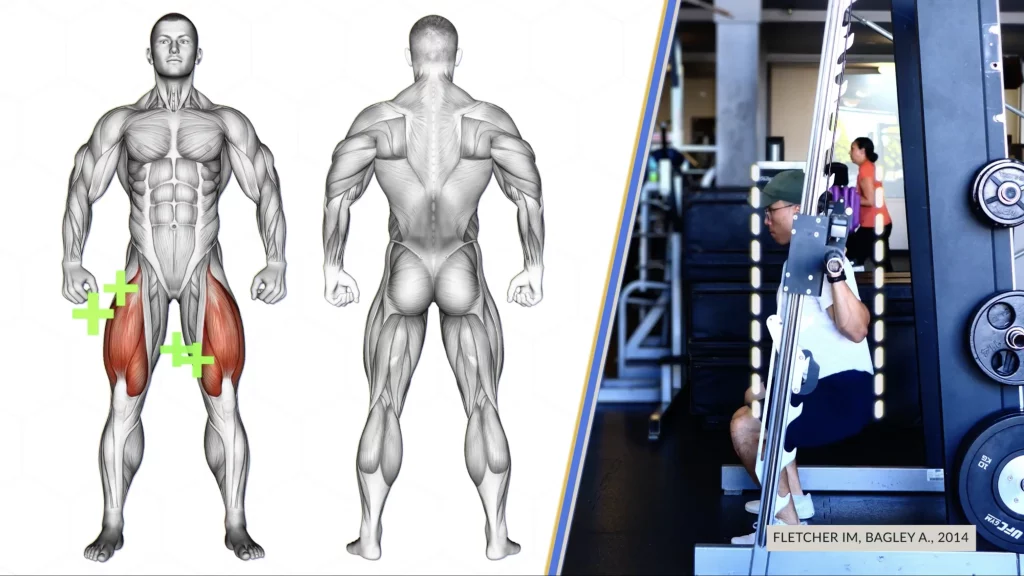
And no, for those wondering, as shown in a recent 2022 review, machines don’t seem to be any less effective at building muscle than free weights, and in the case of the quads, the right machine can potentially be even more effective.
So don’t be afraid to use them.
At the end of the article, I’ll show you how to apply machine work into your routine, but first I want to show you one way you can actually make regular barbell squats even more effective at targeting your quads with minimal stability demands placed on your lower back muscles.
Psst: if you frequently struggle with lower back pain, check this article out — it covers the easiest way you could fix and prevent lower back pain (for good!)
We’ll cover that in mistake number 2.
Mistake 2: Exercise Execution
The next mistake has to do with your exercise execution.
By tweaking your form during your leg exercises, you can shift more of the focus to your quads rather than other muscles like your glutes and lower back.
The way we do this mainly has to do with the angle of your shin.
It’s been shown that the more forward your shin angle is, the greater the knee movement and the more the quads will be involved compared to the glutes and lower back muscles.
To illustrate this, if you were to compare these two squats, the one on the right with the more forward shin angle would be providing far greater tension on the quads.
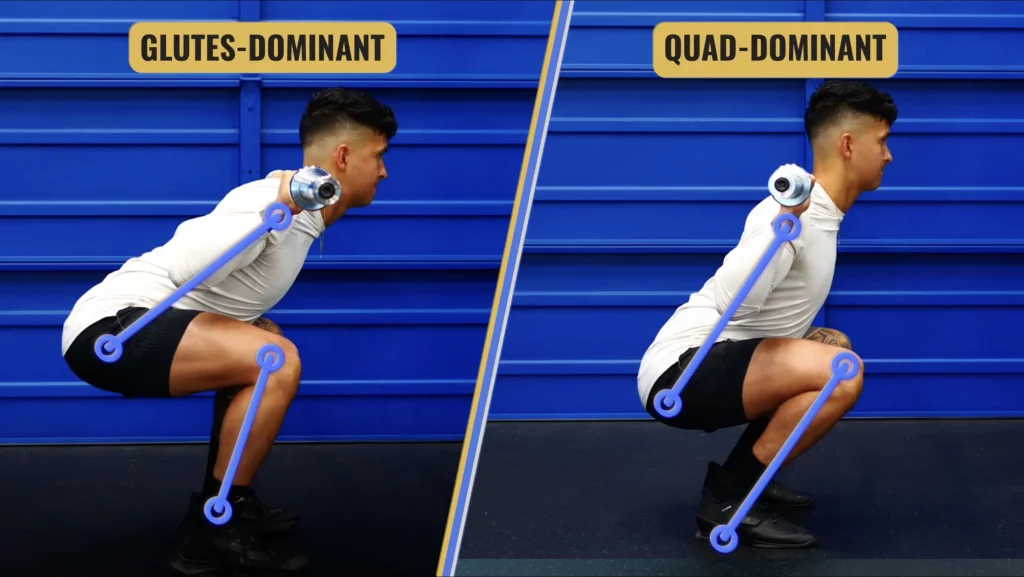
Now some people naturally squat in this quad-dominant style and probably aren’t reading this article because they’ve got big quads (lucky them!)
How To Increase Your Shin Angle Across Various Leg Exercises (Even If You Have Limited Ankle Mobility)
But most of you reading likely have limited ankle mobility which makes achieving this forward shin angle very difficult.
To help with this, one option is to invest in a pair of lifting shoes for a slight heel lift. Here's a link to a budget-friendly one I’d recommend.
Another option however is to simply use a couple of weight plates to elevate your heels onto as you squat.
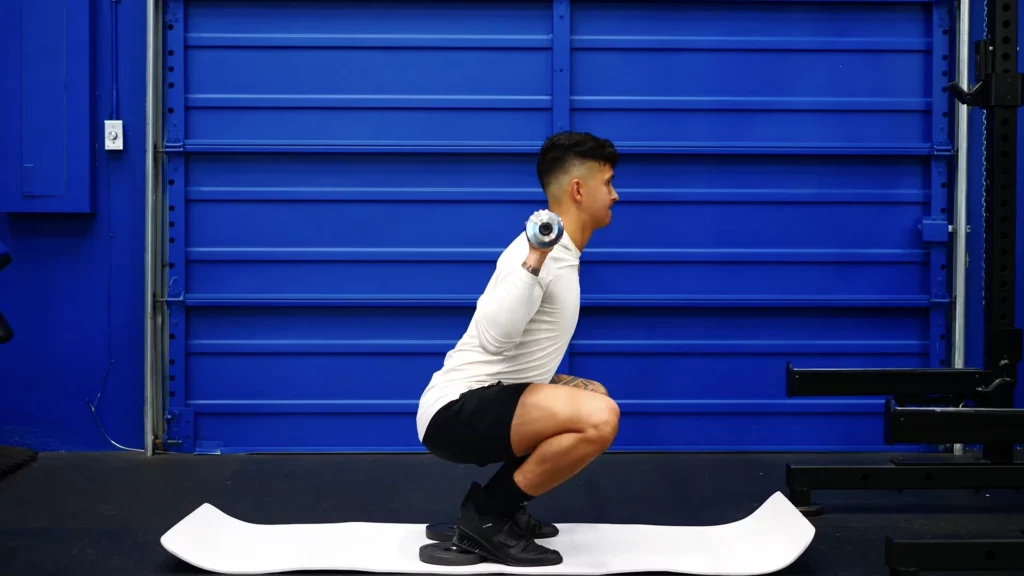
As we’ll talk about in the next mistake though, you will have to use considerably lighter weight.
But this tip doesn’t just apply to squats. For example, a 2008 paper analyzed muscle activation during the leg press. Researchers found that a low foot placement elicited significantly higher quadriceps involvement than either a standard or high foot placement.
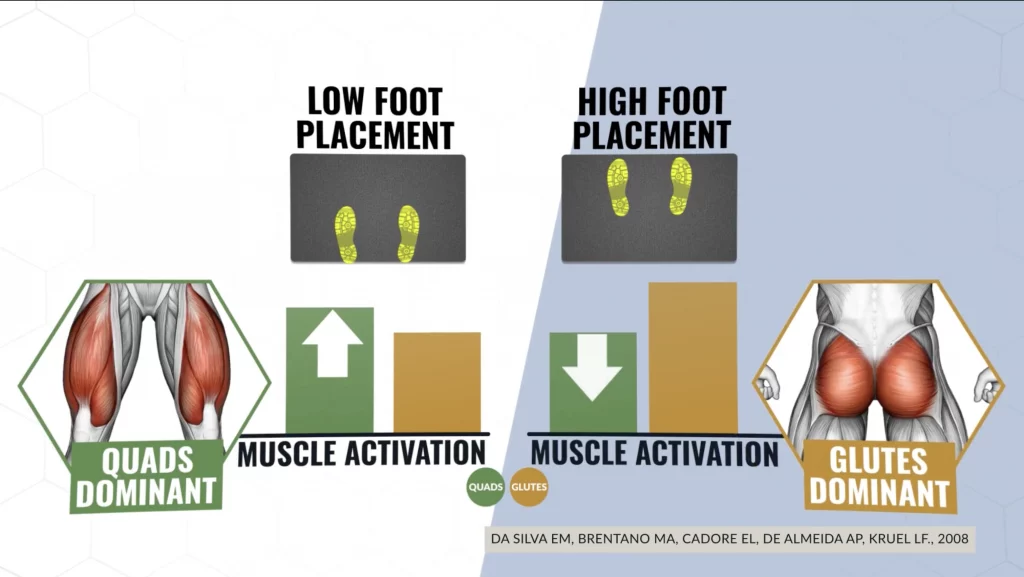
Why? Well, if you’ve been paying close attention you’ve probably realized that a low foot placement allows a greater forward shin angle and as a result will emphasize the quads more.
However, ankle mobility will still be a limiter for how low you can place your feet but play around with how low you can go, and again consider using lifting shoes to help out with this.
And lastly, you can also apply this concept to lunges and Bulgarian split squats as well.
Rather than keeping your knee directly over your foot, let your knee and shin travel forward, and try using a heel elevation on your front foot to create an even greater forward shin angle to emphasize the quads even more.
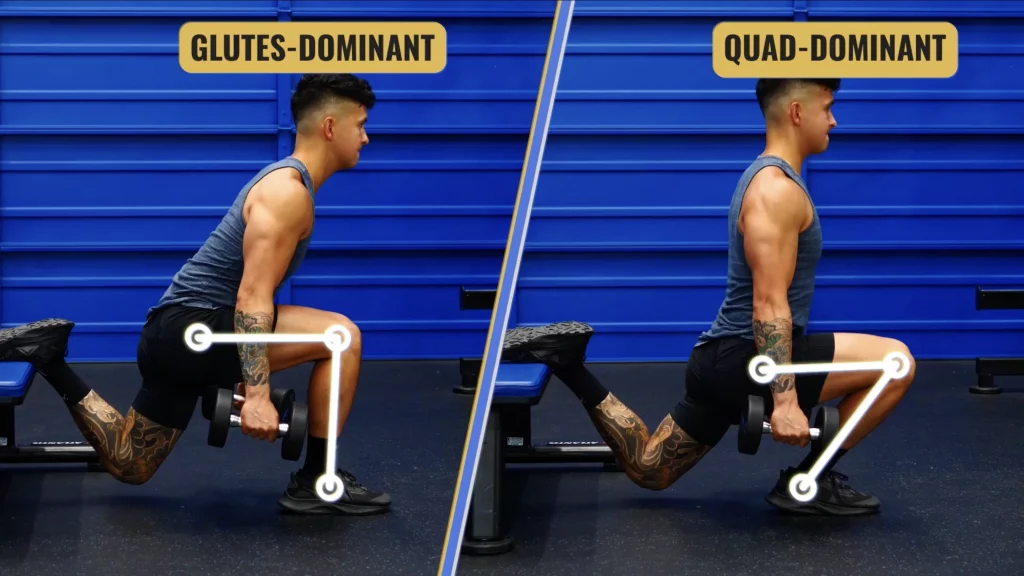
However, you need to be mindful of one thing after applying this tip. This is where the next mistake comes in.
Oh, and of course, you shouldn't only learn (and apply) "tricks" that'll boost your quads activation. You should do it for your other muscle groups, too. But where could you possibly get that knowledge from? Answer: Built With Science programs. For more information:
Click the button below to take my analysis quiz to discover the best program for you:
↓
Mistake 3: Going Too Heavy
By applying the previous tips to your exercises, you’ll have successfully reduced the tension placed on other muscles like the glutes and low back and moved that tension to the quads.
As a result, you’re not going to be able to lift nearly as heavy as you used to on your leg workout.
For example, you may have been able to easily squat two 45 plates on each side with your normal form. But with your heel elevated quad-focused form, this may initially go down all the way to just one plate on each side.
This is expected because you’re now forcing your weaker quads to do the work.
But your muscles can’t tell how heavy the weight you’re lifting is, it only cares about the amount of tension that’s placed on it.
So it’s absolutely crucial, not just for a heel elevated squat but for all your leg exercises, that you don’t let your ego get the best of you and let your body “cheat” to get the other muscles to help out.
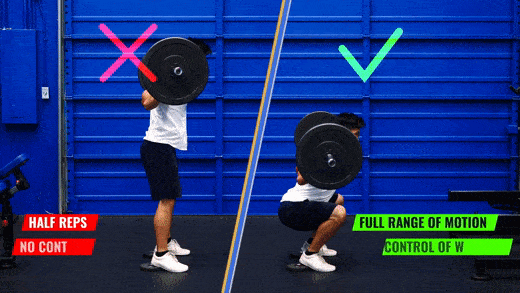
Control the weight and spend about 2-3 seconds on the way down of each rep, and you’ll experience far more growth in your quads despite using lighter weight.
Mistake 4: Neglecting The Rectus Femoris
The next mistake has to do with your workout programming.
Remember how your quads are made up of four muscles? Well one of them is “special”. It’s called the rectus femoris.
It attaches at the pelvis and travels down the middle of your thigh.
Because of its unique anatomy, during classic leg exercises like squats and leg presses, the rectus femoris doesn’t get very well activated when compared to the other 3 quad muscles.
It is instead best activated in exercises like the leg extension or sissy squat where only your knees extend, and your hips remain locked in place.
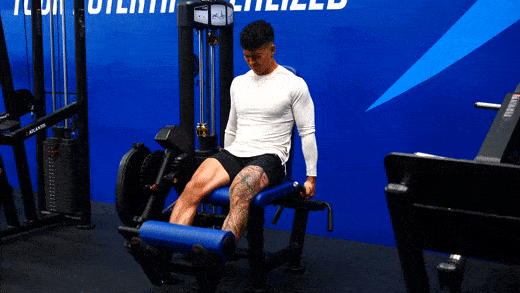
Up until now, we’ve mostly had muscle activation studies to support this, and some research that shows the rectus femoris doesn’t grow very much from squatting.
But a recent 2021 study really put this theory to the test. They had a group of subjects perform either the squat or the leg extension for 5 weeks and measured the growth at 3 different sites in the rectus femoris muscle.
The result? The leg extension group experienced statistically significant growth in their rectus femoris at all three measurement sites, while the squat group didn’t see significant growth at any of the sites.
After we go through the last mistake I’ll show you how to tweak your routine to make sure your rectus femoris doesn’t get left behind.
But for now, let’s talk about mistake number 5.
Mistake 5: Effort
The last mistake has to do with effort.
We know that to maximize growth, you need to push yourself hard enough during your sets to reach at least within 3 reps of failure, which is the point where you couldn’t do 1 more rep with good form if your life depended on it.
The problem is, even when training the upper body, research has shown that most people don’t push themselves hard enough to reach this point.
So when it comes to your leg days, be honest with yourself, are you truly pushing yourself hard enough? Or do you stop your sets when you just start to feel the burn and in reality could have done 5 or even 10 more reps?
Given the sheer size of the quad muscles and the blood flow it receives, this is not going to feel comfortable.
But the willingness to push through this discomfort is often what separates those who have an impressive set of legs from those who don’t.

Now, to help with this, consider using a pre-workout supplement.
I personally take pre-workout specifically on my leg days as they’ve been shown to provide a greater benefit for lower body strength than upper body strength, likely because of just how much harder you have to push yourself mentally on those days.
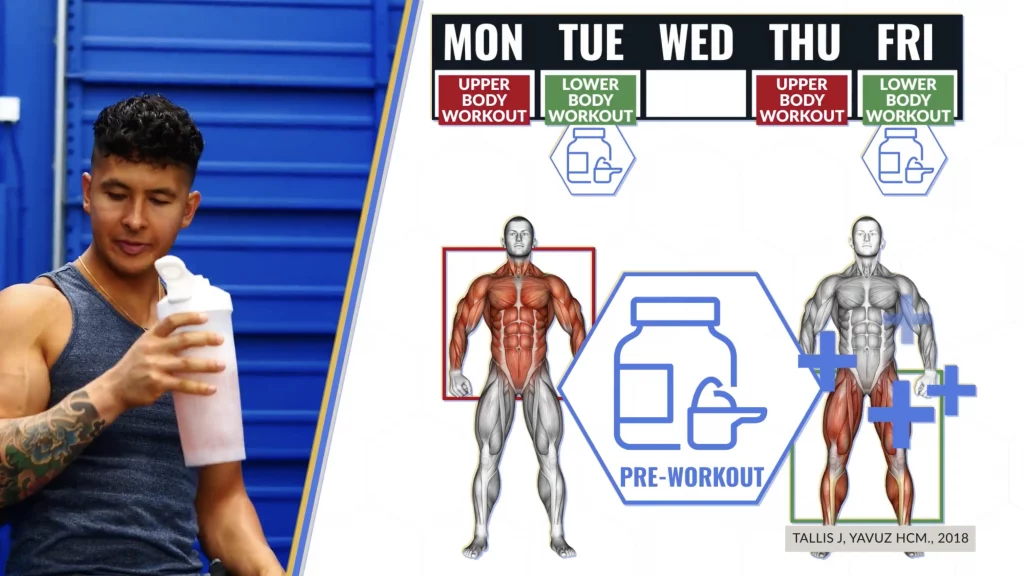
But regardless, give it your all and remember that the growth you've been seeking is on the other side of that discomfort.
How To Apply Everything You've Learned For Explosive Quads Growth
Alright, we learned a lot today so let’s quickly cover how to apply it to your routine.
First, if you’re doing regular barbell squats and not feeling it much in your quads, try temporarily switching that for a heel elevated squat or a machine like a hack squat or smith machine squat. And for your leg presses and split squats, consider using the quad-focused form I showed to further emphasize the quads.
Second, after you do your big leg exercises, don’t forget about throwing in a leg extension and/or sissy squat at the end of your workouts to emphasize the rectus femoris, that “special” quad muscle we talked about.
And lastly, as you do this, lighten the weight, so your quads are forced to do the work but push yourself hard to reach close enough to failure for your quads to actually grow.
What's Next?
Implement this, and you’ll very quickly start to feel and see the difference in your quads development.
But it’s important that you take this same step-by-step, science-based approach to all the muscles you train if you want to maximize your efforts.
For a plan that puts this all together for you, just take our analysis quiz to discover the best plan for you and your body below:
Click the button below to take my analysis quiz to discover the best program for you:
↓
For a plan that puts this all together for you, just head on over to builtwithscience.com and take our analysis quiz to discover the best plan for you and your body.
Also, we focused a lot on the quads in this article, but it’s important that you don’t neglect your other muscles. That's where the following past articles come in:
- The Best Glutes Workout To Grow Your Flat Butt (Gym Or Home!)
- 15 BEST Shoulder Exercises For Boulder Shoulders (And How To Use Them)


